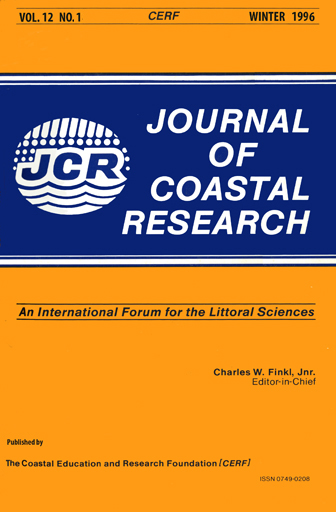Shore Disturbance and Dune Plant Distribution
Keywords:
Dune plant distribution, vegetation changes, natural disturbance, BrazilAbstract
Topographic and edaphic characteristics and the floristic composition were determined along five strip-transects in ten dune areas along the southern Brazilian coast, each subject to different overwash frequencies and prevailing wind patterns. The relative frequency of each species was estimated in 10 m wide zones parallel to the beach. Plant association analysis was done on 17 (≥4.5% average frequency) out of the 37 species recorded. Cluster analysis characterized four vegetation associations with dominance of Blutaparon portulacoides, Hydrocotyle bonariensis - Paspalum vaginatum, Spartina ciliata and Panicum racemosum. Discriminant analysis separated Blutaparon, Spartina and Panicum associations along a gradient of increasing seawater overwash disturbance as the principal abiotic discriminant function. Height above mean low water, beach inclination, sediment pH, and fine particle content gradients significantly correlated with the primary discriminating factor. A second abiotic function described a sand particle size gradient, which separated Panicum and Hydrocotyle-Paspalum associations, the latter being characteristic of a few Sites where drainage creeks break the dunes or seasonal waterlogging occurs. The Blutaparon association occurs on backshores along the entire southern brazilian coast, whilst a gradient of increasing disturbance is likely to be responsible for the substitution of Panicum and Spartina foredune associations.


